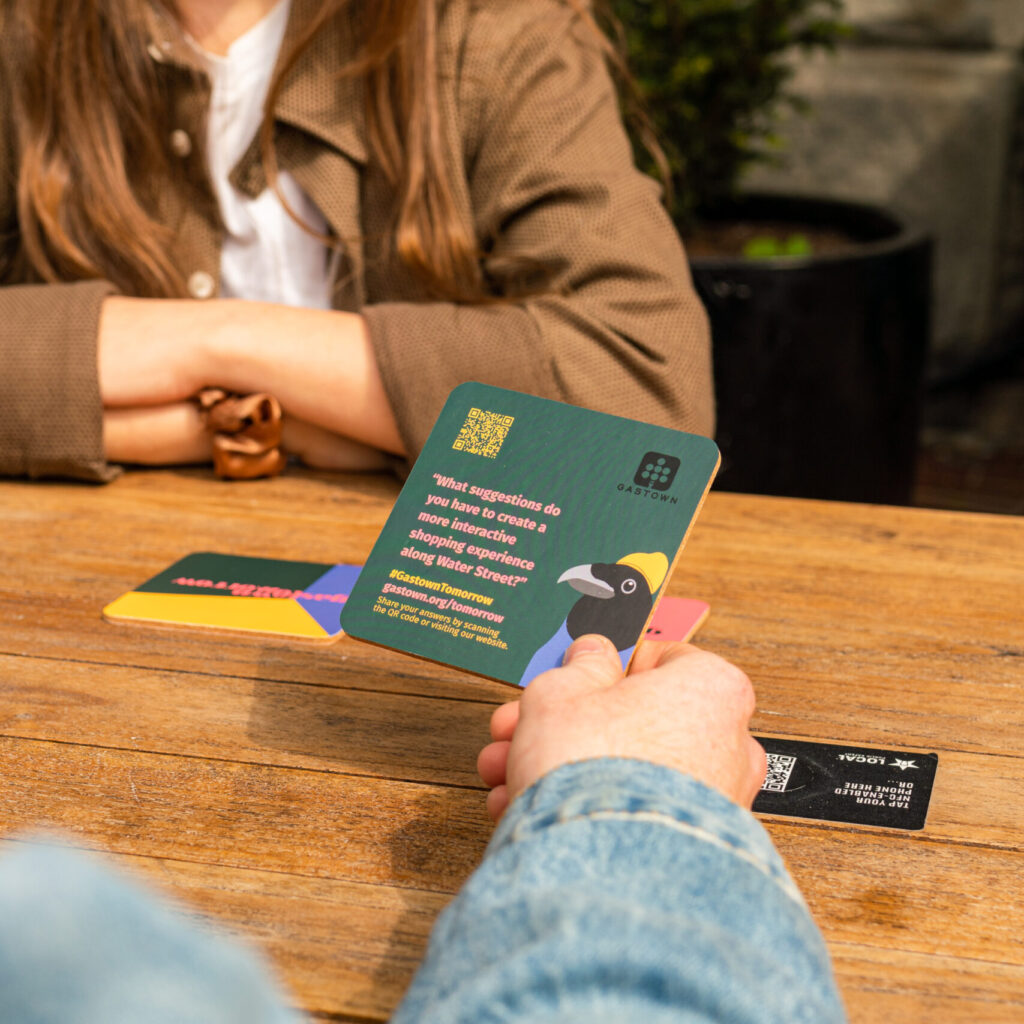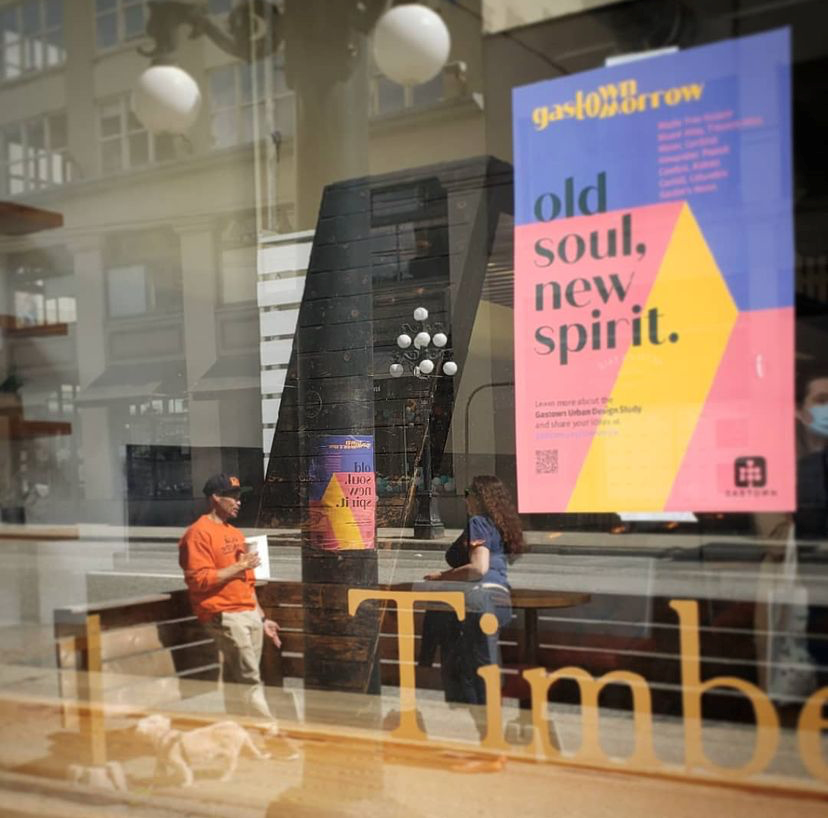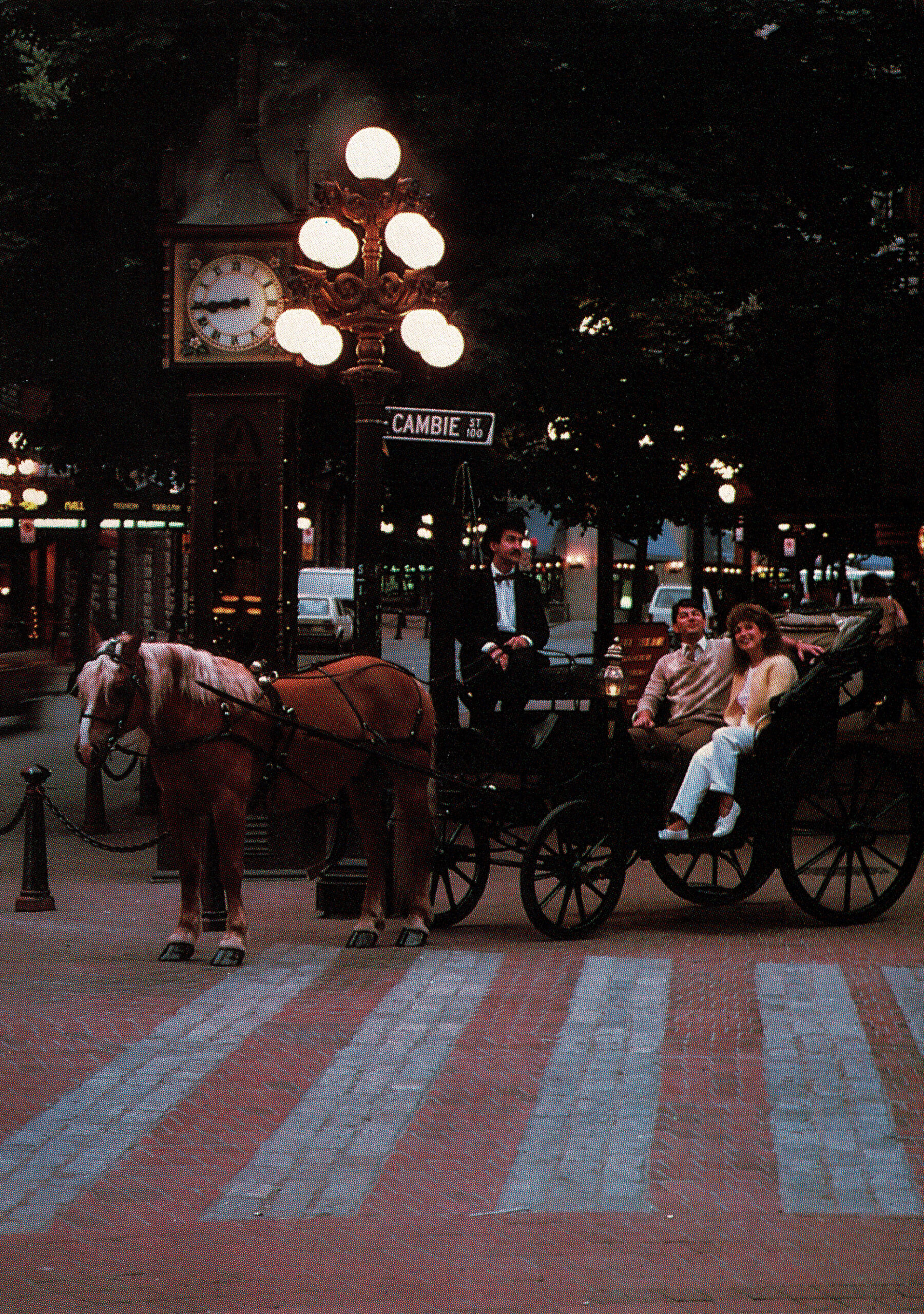
Back in 2020, we put our thinking caps on and launched the Gastown Urban Design Study—a deep dive into how shifting streets, plazas, and patios might shape life here for businesses, workers, residents, and visitors alike.
That study, paired with honest community feedback collected through the #GastownTomorrow campaign, set the stage for how we’ve been pushing for change ever since. It gave us the backbone of our advocacy with the City of Vancouver and spotlighted the neighbourhood’s top priorities for action.
We’ve pulled out the greatest hits: below, you’ll find a snapshot of the Top 5 community suggestions for each major question (some of which can be seen being implemented today).


Top 5 Community Suggestions
If Maple Tree Square could change from a car to a people-centric space, what activities would you like to see?
Community Suggestions:
- More programming – Art shows, farmers markets, jazz, chalk art… people want the square buzzing with life.
- Design matters – Keep it distinct, contemporary, and true to heritage, with First Nations voices guiding the vision.
- Urban features – From seating and gardens to play areas and skate spots, folks want functional, people-first spaces.
- Pedestrian vs. cars – Some dream of a car-free square, others worry it could hurt the neighbourhood.
- What to lose – Cars, noise, touristy gift shops… and the Gassy Jack statue, with calls to replace it with Indigenous recognition.
What would you like to see mark the gateway to gastown at the top of water and cordova street?
Community suggestions:
- Signage – Highlight heritage, past trades, and maybe add a shopping map.
- Art – More works by First Nations, local, and contemporary artists.
- Fountain – A gathering spot that boosts ambiance.
- Lighting – Expand on the much-loved illuminated trees, maybe as art.
- Keep it subtle – Gastown’s charm is discovery; focus on upgrading what’s already here.
How could the streets and alleyways be designed differently for a more enjoyable journey to your destination?
Community suggestions:
- Dog friendly – Green spaces, poop bags, easy disposal.
- Lighting – More ambiance + safety.
- Cobblestones – Keep the charm, make it accessible.
- Garbage – New system needed, better organized.
- Businesses & beauty – More shops, plants, signage, and seating.
What are your favourite characteristics of blood alley, and how would they come to life both in the day and at night?
Community suggestions:
- Hidden charm – Alleys as secret spots with nooks, gardens, and pop-ups.
- Mature trees – Treasured greenery in a neighbourhood short on it.
- Safety & inclusivity – Spaces where everyone feels welcome.
- Shops & dining – Expand restaurants and retail into the alleys.
- Pocket park – Greenery, seating, and fountains for quiet retreat.
What suggestions do you have to improve the way you interact with storefronts along water street?
Community suggestions:
- Safety first – Tackle vandalism and open drug use through collaboration with DTES groups, City, and social orgs.
- Patios & cover – More outdoor seating with awnings for rainy days.
- Pop-up vibes – Food carts, flowers, and art to draw people in.
- Local shops – Less touristy, more everyday needs for residents and workers.


Community Ambassadors
As part of #GastownTomorrow, we invited some of Gastown’s most iconic creatives to imagine the future of the neighbourhood—not through reports or data, but through sketches and stories.
We teamed up with some of Gastown’s most iconic creatives—John Fluevog, Anna Kosturova, Ben Leavitt, Charles Guan, and Jocelyn Fortier—to sketch their visions of the neighbourhood. Each artist re-imagined a key corner of Gastown, blending heritage with possibility.
These sketches became the heartbeat of the campaign: bold, personal visions that inspired conversation and drew the community in.
You can still see them today, larger than life, on the Water Street side of Vancouver Film School.
DOWNLOAD THE FULL REPORT HERE.
This Gastown Urban Design Study was conducted by ph5 architecture, who are active advocates and members of the community and have a studio in Gastown. Their approach to develop the Urban Design Study included a workshop designed to orchestrate focused discussions, identify synergies, and consider urban design responses to public realm opportunities and challenges. The process functioned to not only collect data but to also observe and consider the qualitative nature of the neighbourhood and its guests.
The Urban Design Study uncovered some interesting information that we encourage you to explore in more detail.
- The majority of vehicle traffic is commuter traffic and 40% of the public realm is used for vehicular traffic on Water and Cordova Street.
- There are no green spaces in the Gastown BIA and Crab Park isn’t very accessible for some.These 6 places have been identified to define Gastown’s characters.
- There are 2189 parking spots in Gastown and 88% of visitors to Gastown arrive by public transport, walking or biking.

